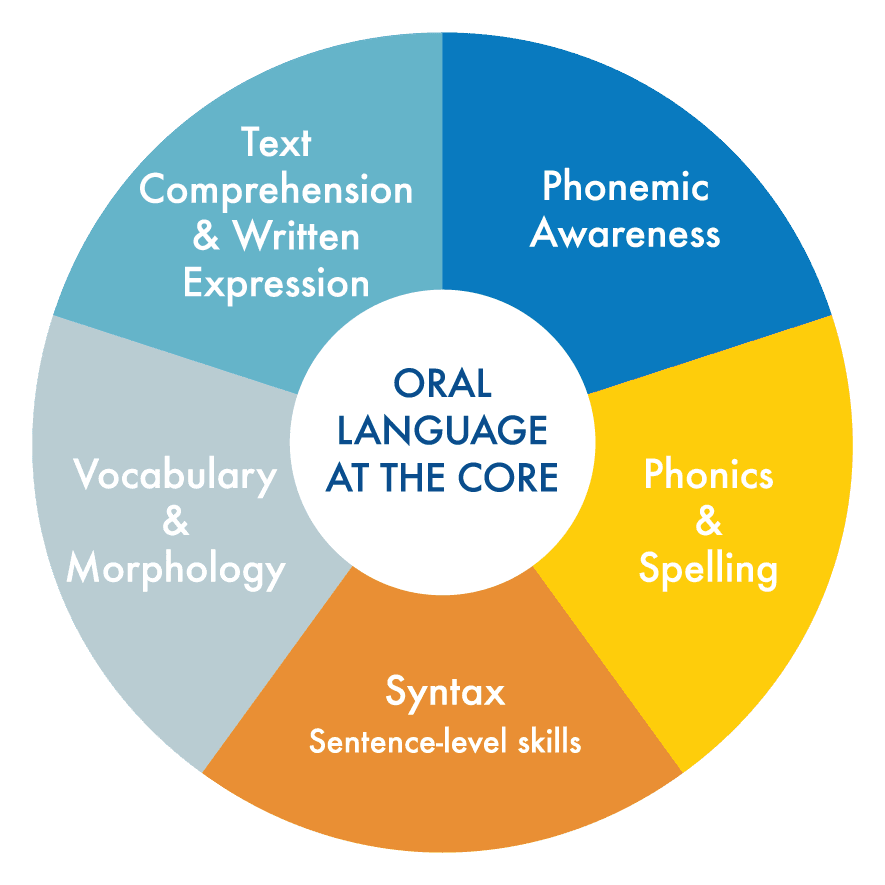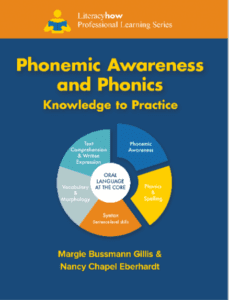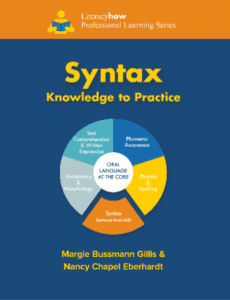
Fluency
What is it?
Fluency is the ability to read orally with sufficient accuracy, appropriate rate, and suitable expression. Our model expands fluency to encompass all aspects of literacy development. Fluent—automatic—performance in both discrete (word recognition) and complex (comprehension, composition) literacy skills is essential for proficient reading and writing.

Fluency
What is it?
Fluency is the ability to read orally with sufficient accuracy, appropriate rate, and suitable expression. Our model expands fluency to encompass all aspects of literacy development. Fluent—automatic—performance in both discrete (word recognition) and complex (comprehension, composition) literacy skills is essential for proficient reading and writing.
Frequently Asked Questions
Fluency is essential to the learning process because it directly contributes to three critical learning outcomes:
Retention: the ability to perform a skill or to recall knowledge long after formal learning/training has ended
Stamina: the ability to maintain performance levels for extended periods of time
Generalization: the ability to combine and apply what has been learned to perform more complex tasks creatively and in new situations.
- Fluent readers are better able to comprehend because their focus is on the text’s propositions rather than the individual words .
- The relationship between fluency and comprehension is attributed to proficient word recognition. Automatic word reading supports one’s ability to pay attention to what the text means.
Why is fluency important for reading proficiency?
Fluency, also referred to as automaticity, refers to performing a skill without thinking about all of the steps involved. Reading proficiency requires automaticity of many sub-skills including: naming letters, knowing the most common letter-sound correspondences for all 26 letters, and blending these sounds to read real and nonsense words.
What should the focus be for students who need reading fluency practice?
When administering an Oral Reading Fluency measure, analyze the results on three levels:
Accuracy (words correct per minute) identifies whether the student is reading the text at an independent level (98-100% accuracy), an instructional level (90-97% accuracy) or a frustration level (below 90% accuracy).
Reading rate (the number of words read correctly per minute – WCPM). See the updated fluency norms chart.
Prosody (phrasing and intonation) is a subjective measure that assesses expression while reading. See this fluency rubric.
What is the relationship between fluency and comprehension?
How does processing speed impact fluency?
Teacher tip: Fluency Ramp
The growth of reading fluency is a lofty goal–one that requires many different kinds of instruction. The fluency ramp illustrates the need for practice developing students’ word reading accuracy and automaticity with a focus on connecting to meaning.
Teacher tip: Practice!
Practice is key to instruction designed to improve fluency. The more a skill is reviewed, the more quickly and easily the skill can be performed. But it’s important to focus on the right type of practice. Try these suggestions for developing fluency for any type of skill:
Practice for short periods of time.
Repeated reading of texts is effective especially when there is a different focus (e.g., accuracy, automaticity, prosody) each time the passage is read.
Emphasize the importance of reading words accurately and with proper expression. The goal is to read fast enough to make meaning.
Teacher tip: Scoop it
Practice scooping words in grammatical phrases in connected text to support prosody. Use an ice cream scoop or pointer when modeling and have students follow along with their pencils. See Syntax section of the wheel.
Teacher tip: Expression Aids meaning
Prosody is a relatively strong indicator of how well a student comprehends the text being read. Directing students to read with expression is one way to encourage them to focus on meaning.
Teacher tip: Take a Phrase Walk
Take a word or phrase walk in lieu of a picture walk if a teaching objective includes reading text fluently (i.e., accurately and automatically with proper phrasing). Instead of looking at pictures to make a prediction, students read words and phrases from the text to activate prior knowledge about the topic. This technique gives students an opportunity to practice reading words that are integral to comprehension. It also focuses students’ attention on some words and phrases that may be difficult to decode or understand.
Teacher tip: When and how to intervene
When reading fluency shows little improvement, check the fluency of the various subskills that contribute to overall fluency. Results indicate that intervention programs that address multiple components of the reading process simultaneously (e.g. vocabulary, syntax, phonology) produce promising results, especially for students with rapid naming deficits. RAVE-O (Retrieval, Automaticity, Vocabulary, Engagement with Language and Orthography; Wolf et al., 2009) is one such example.
Tips for Principals: accuracy,rate,prosody
Make sure that teachers understand the three aspects of reading fluency and how best to measure them. (See above). Use data team meetings to analyze oral reading fluency data (i.e., accuracy and rate), discuss prosody and how best to measure that important aspect of reading fluency.
Tips for Principals: Observation
Notice some of the following as evidence that the teacher is stimulating fluency behaviors:
- Incorporates fluency-building activities (e.g., letter naming/identification, practice with punctuation marks, reading phrases with proper intonation) into instruction.
- Utilizes techniques that build reading fluency throughout the day, including modeled fluent reading, choral reading, repeated readings, paired reading, independent reading.
- Charts students’ fluency progress for purposes of motivating students as well as to document progress and to adjust instruction.
Read More to Learn more
- Adams, M.J. (2011). Technology for developing children’s language and literacy: Bringing speech recognition to the classroom. New York, NY: The Joan Ganz Cooney Center at Sesame Workshop.
- Bashir, A. & Hook, P. (2009). Fluency: A key link between word identification and comprehension. Language, Speech, and Hearing Services in Schools 40 (2), 196-200.
- Hasbrouck, J. (2006). Drop everything and read—But how?: For students who are not yet fluent, silent reading is not the best use of classroom time. American Educator 30(2), Summer 2006.
- Hudson, R.F., et al. (2009). The complex nature of reading fluency: A multidimensional view. Reading & Writing Quarterly 25: 4-32.
- Hudson, R.F. et al. (May 2005). Reading fluency assessment and instruction: What, why, and how? The Reading Teacher 58, 702-714.
- Pikulski, J.J. & Chard, D.J. (March 2005). Fluency: Bridge between decoding and reading comprehension. The Reading Teacher 58, 510-519.
Literacy How Professional Learning Series
The Literacy How Professional Learning Series translates the latest reading research into how-to instruction. The Knowledge to Practice book Series—Phonemic Awareness and Phonics, Syntax, Vocabulary, and Comprehension—is based on the current and comprehensive Literacy How reading model. It draws upon the authors’ decades of expertise and experience working with thousands of general and special education teachers. The Series emphasizes Pre-K-3rd grade conceptual and skill development. Teachers of older emerging or struggling readers will also find these tools useful.

Phonemic Awareness and Phonics—the keys to breaking the code!

Syntax is essential—even for beginning readers!

Vocabulary knowledge is essential for effective comprehension!

Comprehension is the goal of reading—even for beginning readers!